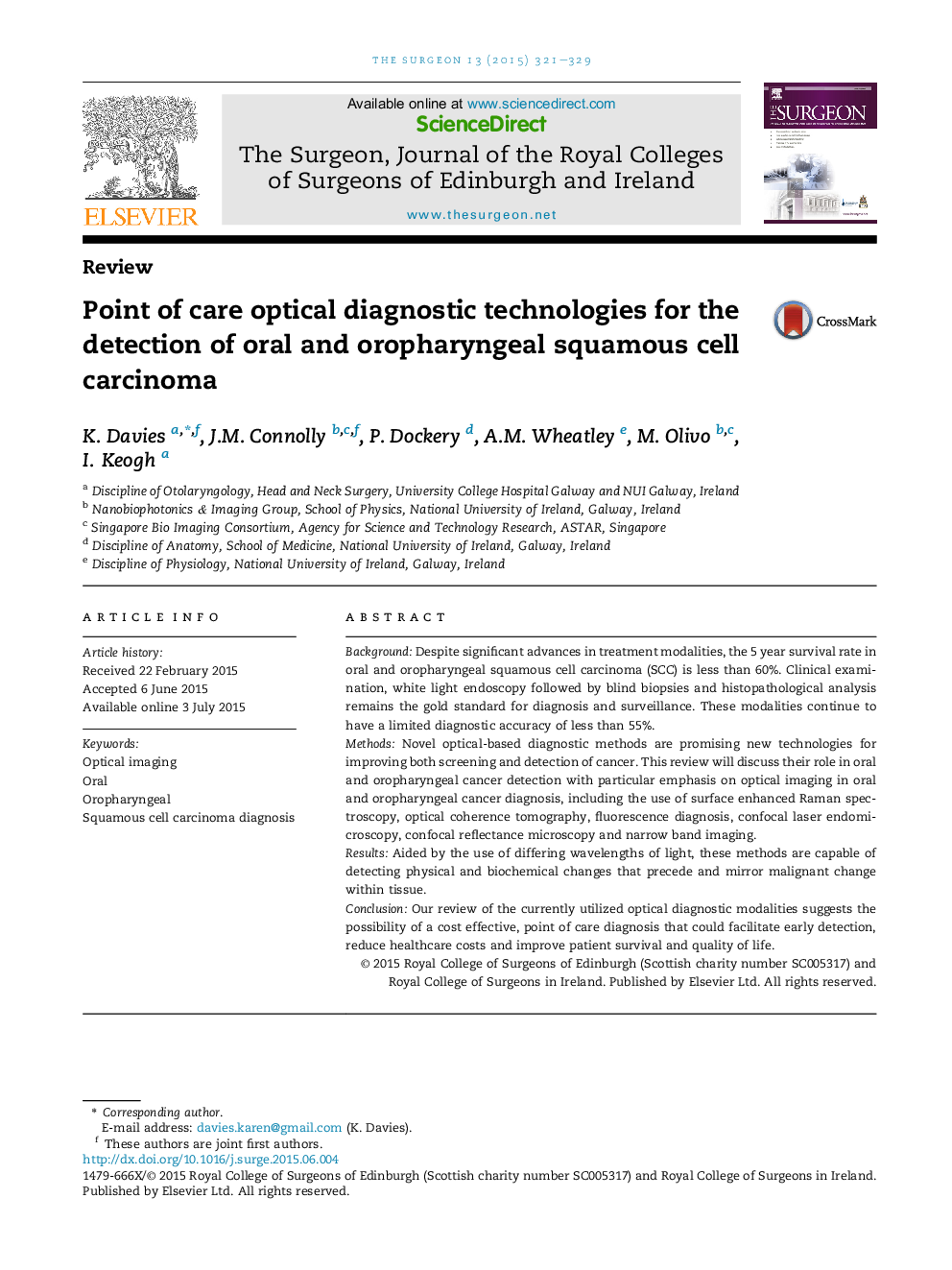| Article ID | Journal | Published Year | Pages | File Type |
|---|---|---|---|---|
| 3178427 | The Surgeon | 2015 | 9 Pages |
BackgroundDespite significant advances in treatment modalities, the 5 year survival rate in oral and oropharyngeal squamous cell carcinoma (SCC) is less than 60%. Clinical examination, white light endoscopy followed by blind biopsies and histopathological analysis remains the gold standard for diagnosis and surveillance. These modalities continue to have a limited diagnostic accuracy of less than 55%.MethodsNovel optical-based diagnostic methods are promising new technologies for improving both screening and detection of cancer. This review will discuss their role in oral and oropharyngeal cancer detection with particular emphasis on optical imaging in oral and oropharyngeal cancer diagnosis, including the use of surface enhanced Raman spectroscopy, optical coherence tomography, fluorescence diagnosis, confocal laser endomicroscopy, confocal reflectance microscopy and narrow band imaging.ResultsAided by the use of differing wavelengths of light, these methods are capable of detecting physical and biochemical changes that precede and mirror malignant change within tissue.ConclusionOur review of the currently utilized optical diagnostic modalities suggests the possibility of a cost effective, point of care diagnosis that could facilitate early detection, reduce healthcare costs and improve patient survival and quality of life.
